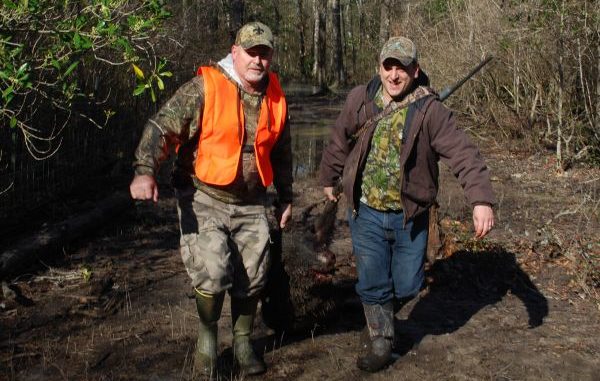
Bill Borges is a deer hunter, and has been one for 40-plus years.
And unlike his friend, Mark Falgoust, he hates hogs.
“On my own lease north of St. Francisville,” he said, “I can see activity on all 1,000 acres. They destroy the road system by rooting up the roads and making wallows. Land owners hate them, too.
“Anywhere that I have hunted as a guest, they tell me that if I see a hog to kill it.”
Deer and hogs don’t mix, the veteran hunter explained. If hogs come in an area, deer leave, he said, noting that he has seen it often on his game camera: Deer under a feeder will run off, and the next frame shows a hog coming in.
Borges firmly believes deer will relocate if hogs in numbers use an area, even though he said the normal home range of a deer — excluding a buck in rut — is only 500 yards wide. Hogs can squeeze deer out, he said, because deer have one fawn per year and hogs have two litters with many young each year.
But Borges, who feeds and plants year-round, sees hogs’ appetites as their biggest problem.
“They are called hogs because they are gluttonous pigs,” he exclaimed with grim humor.
Hogs will eat 300 pounds of protein in two or three days. Protein costs $18 for 50 pounds; protein is expensive.
“I’ve seen hogs sit (on a camera) on their haunches like dogs and stick their noses in the tube and eat for hours,” Borges said. “They will rotate from feeder to feeder, and eat and eat.
“They rapidly learn when a feeder goes off. You either have to move your feeders or put up a 30-inch-high chain-link fence. Deer will jump over that, but hogs won’t. Within two days of not feeding them, they will move to the next property.”
He added that hog populations have been a problem for about five years, but that the last 2 years have been especially difficult.
And they do more than just eat feed: He has turned up to hunt and found $400 tripod feeders 50 yards away from where they were originally placed and destroyed.
Borges plants food plots, oats, clover, rye grass and high-protein plant blends.
“They will chew (green fields) up, root it up and eat the roots,” he said. “They even chew up the briars that shelter them and deer.
“There is no question in my mind that hogs affect deer antler growth in areas where supplements are fed.”
Borges shoots all the hogs he sees on his lease, and tries to eat all that he shoots. But he feels that, while hog hunting is part of the solution, hog reduction can’t be done by hunting alone.
“Probably the biggest way to eliminate the hog problem,” he said pensively, “is not to put corn out.
But you almost have to feed because neighboring hunters use it. If your next-door neighbors put out feeders and you don’t, you won’t see deer. They go there.
“My feeling is that hogs are overrunning the land. They need to be reduced. If they would be eliminated from my property, I would be happy.”


